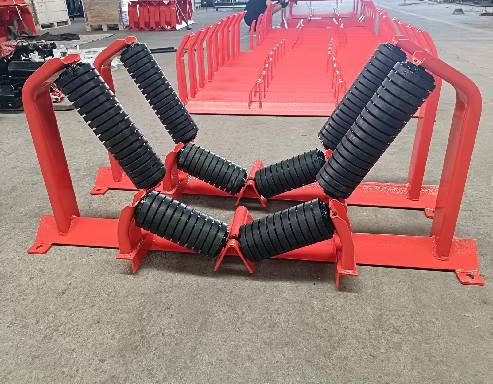 Afrikaans
Afrikaans  Albanian
Albanian  Amharic
Amharic  Arabic
Arabic  Armenian
Armenian  Azerbaijani
Azerbaijani  Basque
Basque  Belarusian
Belarusian  Bengali
Bengali  Bosnian
Bosnian  Bulgarian
Bulgarian  Catalan
Catalan  Cebuano
Cebuano  Corsican
Corsican  Croatian
Croatian  Czech
Czech  Danish
Danish  Dutch
Dutch  English
English  Esperanto
Esperanto  Estonian
Estonian  Finnish
Finnish  French
French  Frisian
Frisian  Galician
Galician  Georgian
Georgian  German
German  Greek
Greek  Gujarati
Gujarati  Haitian Creole
Haitian Creole  hausa
hausa  hawaiian
hawaiian  Hebrew
Hebrew  Hindi
Hindi  Miao
Miao  Hungarian
Hungarian  Icelandic
Icelandic  igbo
igbo  Indonesian
Indonesian  irish
irish  Italian
Italian  Japanese
Japanese  Javanese
Javanese  Kannada
Kannada  kazakh
kazakh  Khmer
Khmer  Rwandese
Rwandese  Korean
Korean  Kurdish
Kurdish  Kyrgyz
Kyrgyz  Lao
Lao  Latin
Latin  Latvian
Latvian  Lithuanian
Lithuanian  Luxembourgish
Luxembourgish  Macedonian
Macedonian  Malgashi
Malgashi  Malay
Malay  Malayalam
Malayalam  Maltese
Maltese  Maori
Maori  Marathi
Marathi  Mongolian
Mongolian  Myanmar
Myanmar  Nepali
Nepali  Norwegian
Norwegian  Norwegian
Norwegian  Occitan
Occitan  Pashto
Pashto  Persian
Persian  Polish
Polish  Portuguese
Portuguese  Punjabi
Punjabi  Romanian
Romanian  Russian
Russian  Samoan
Samoan  Scottish Gaelic
Scottish Gaelic  Serbian
Serbian  Sesotho
Sesotho  Shona
Shona  Sindhi
Sindhi  Sinhala
Sinhala  Slovak
Slovak  Slovenian
Slovenian  Somali
Somali  Spanish
Spanish  Sundanese
Sundanese  Swahili
Swahili  Swedish
Swedish  Tagalog
Tagalog  Tajik
Tajik  Tamil
Tamil  Tatar
Tatar  Telugu
Telugu  Thai
Thai  Turkish
Turkish  Turkmen
Turkmen  Ukrainian
Ukrainian  Urdu
Urdu  Uighur
Uighur  Uzbek
Uzbek  Vietnamese
Vietnamese  Welsh
Welsh  Bantu
Bantu  Yiddish
Yiddish  Yoruba
Yoruba  Zulu
Zulu Exploring the Functionality and Importance of the Drive Shaft Pulley in Automotive Systems
Understanding Drive Shaft Pulley Functions and Importance
The drive shaft pulley plays a crucial role in the functioning of various machinery, particularly in automotive and industrial applications. As part of a larger system, it serves as a vital component that helps transfer power from an engine to different parts of a vehicle or a machine. Understanding the intricacies of drive shaft pulleys can help us appreciate their importance in maintaining efficiency and performance.
Structure and Design
A drive shaft pulley is typically made of durable materials such as aluminum or steel, ensuring it can withstand high torque and stress during operation. Its design often features grooves or notches that correspond with the belts or cables that run over it. This unique structure enables the efficient transfer of rotational energy, helping to propel the system forward.
Pulleys can come in different sizes and shapes, tailored to specific functions within a machine. For example, in a vehicle, the main drive shaft pulley will often be larger to accommodate substantial energy requirements, while smaller pulleys might be used for auxiliary functions. The ratio between the size of the pulleys is also critical, as it directly affects the transmission of speed and torque.
Functionality
The primary role of a drive shaft pulley is to facilitate the transmission of power
. When the engine runs, it generates rotational energy, which is transmitted through the drive shaft. The pulleys then convert this energy into motion that drives other components, such as the wheels or other secondary systems like the power steering pump or the alternator.drive shaft pulley

In a car, for instance, when the engine turns the crankshaft, the drive shaft pulley rotates. This rotation is then transferred via belts to the wheels, providing the necessary force to propel the vehicle forward. Additionally, the drive shaft pulley can help in regulating engine speed, maintaining fuel efficiency, and ensuring smooth operation.
Maintenance and Wear
Like any mechanical component, drive shaft pulleys are subject to wear and tear over time. Factors such as friction, heat, and environmental exposure can compromise their integrity. Regular maintenance is crucial to ensure they remain in good working condition. This may include visual inspections for cracks, replacing worn belts, and ensuring proper alignment.
Neglecting maintenance can lead to more severe issues, such as belt slippage or snapping, which can cause significant damage to the engine or other connected systems. Therefore, keeping the drive shaft pulley and its associated components in optimal condition is essential for vehicle and machinery longevity.
Conclusion
In summary, the drive shaft pulley is a vital component in many mechanical systems, particularly in the automotive industry. Its unique design and functionality play a crucial role in transferring power and enabling machines and vehicles to perform efficiently. Understanding the importance of maintenance can prolong the lifespan of the pulley, thereby enhancing the overall performance of the system.
Whether you are a mechanic, an automotive enthusiast, or just someone interested in how machines work, recognizing the role of the drive shaft pulley will give you a greater appreciation of its importance in the world of mechanical engineering. Regular checks and preventive measures can ensure that these pulleys continue to function effectively, contributing to safer and more reliable operations.
-
Revolutionizing Conveyor Reliability with Advanced Rubber Lagging PulleysNewsJul.22,2025
-
Powering Precision and Durability with Expert Manufacturers of Conveyor ComponentsNewsJul.22,2025
-
Optimizing Conveyor Systems with Advanced Conveyor AccessoriesNewsJul.22,2025
-
Maximize Conveyor Efficiency with Quality Conveyor Idler PulleysNewsJul.22,2025
-
Future-Proof Your Conveyor System with High-Performance Polyurethane RollerNewsJul.22,2025
-
Driving Efficiency Forward with Quality Idlers and RollersNewsJul.22,2025





























